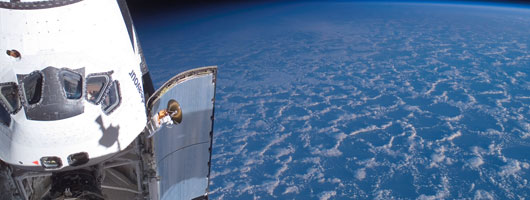Detector Development
state-of-the-art x-ray and gamma ray detectors

The High Energy Astrophysics Group has been a leader in the development of state-of-the-art x-ray and gamma-ray detector systems for over 30 years. It is only by understanding the intricate physics involved in the various detectors systems and in their interaction with radiation encountered in space that one can obtain the ultimate in performance. This knowledge is gained over the years by detailed laboratory studies, balloon flights, and space missions.
Initially the group concentrated on developing NaI/CsI detectors. This lead to the phoswich design that allowed for effective background suppression and high sensitivity, large area detectors. This development culminated with the A-4 instrument on HEAO-1 and the HEXTE on RXTE.
In the 1980s the group developed balloon borne instrumentation based upon cryogenically cooled germanium detectors, in conjunction with groups at the Space Sciences Lab of the University of California, Berkeley and with the Lawrence Berkeley Lab. These detectors gave much higher spectral resolution, while being limited in collecting area, as compared to NaI/CsI detectors. This effort resulted in the HEXAGONE and HiRegs balloon instruments, and was the basis for the MIDEX proposal for the Nuclear Astrophysical Explorer (NAE). While the NAE was not funded, the science it proposed to accomplish will be addressed by the SPI germanium instrument on ESA's Integral mission.
In the 1990s the group began development of CdZnTe (known as CZT or Cad-Zinc) room temperature semi-conductor detectors for space applications. Arrays of pixel or stripe electrodes applied to the surfaces of the CZT detectors allowed for measurement of the position of the x-ray interaction, which in turn is the basis for hard x-ray imaging. While NASA has yet to fly a CZT-based hard x-ray mission (the SWIFT gamma-ray burst mission is in development), CZT strip detectors were the basis for CHIP, HEXIS, and CMI proposals to NASA for flight opportunities.